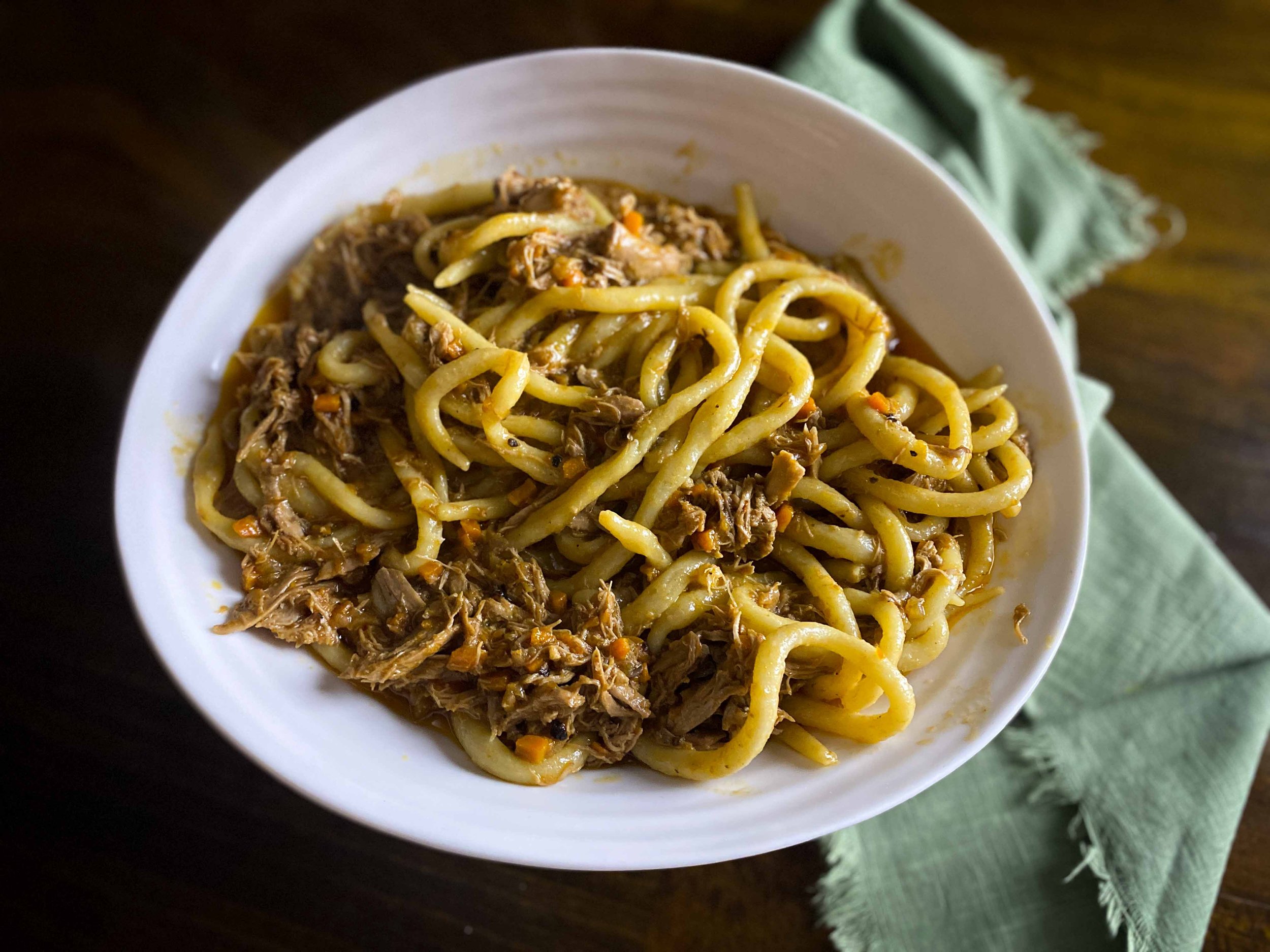By Leslie Brenner
Some cooks like to celebrate the holidays in high fashion, with their best china, stemware and candles. Others prefer to be laid back, dressed down and comfy — focusing on deliciousness without the fancy trappings. Whichever you are — or maybe you fall somewhere in the middle (or celebrate New Year’s but not Christmas) — here’s a dish for you.
Duck ragùs — made by braising duck in red wine with aromatic vegetables then shredding or chopping the meat and reincorporting it into the sauce — are traditional in central Italy and in the north, strongly associated with Tuscany and the Veneto region. They’re the same regions where porcini are beloved, so they make a fine addition — adding umami depth and earthiness.
Traditionally, a duck ragù (ragù all’anatra) is used to sauce a few kinds of pasta.
One is bigoli, a long extruded shape like a thicker spaghetti, originally made with buckwheat flour, often with duck eggs (and now sometimes made with whole wheat flour).
A second is pici — one of my favorite shapes because it’s fun to make at home and it has beautiful texture. Fashioned from a combination of 00 flour or all-purpose flour and semolina flour, without eggs, it’s also like a fat spaghetti, but uneven and rustic, as it’s formed by rolling with your hands on a board. I highly recommend it if you’re not cooking for too many people; for me, four would be the max.
Pici with duck ragù
The third is pappardelle: another of my favorite shapes because it’s so luscious. The broad, long egg noodles are also fun to make, and you can do it easily by rolling out the dough in a pasta maker.
Pappardelle is nice for a bigger crowd — six or eight (or even more) — because of the help provided by the pasta machine. (You have one of those, right?) You make the pasta in the morning, making the dough, letting it rest about 45 minutes (very important!) then rolling it out, letting it dry just a big, and using a knife to cut it into wide strips. It can hang out, dusted with flour, for hours, till you’re ready to cook it.
Alternatively, you can buy dried pappardelle, of course! It’ll still be really good, as the ragù is so luscious.
Next the ragù. It starts with soaking dried porcini in boiling water to reconstitute them; that liquid and the plumped mushrooms will both go into the sauce. While you’re doing that, brown seasoned duck legs in either duck fat or olive oil, then cook onion, carrot and garlic in some of the fat. Add herbs and red wine, chicken broth, the porcini and their broth and crushed tomatoes — along with the duck legs — and let it all braise together for about two hours (maybe a little less), till the duck is very tender. Now and then, skim the fat off the top — there will probably be quite a bit. When the duck is done, pull out the legs, remove the skin, pull the meat from the bones, shred it, stir it back into the ragù, season it, and cook another 15 minutes or so. It will be amazing.
Once the ragù’s done, it can sit as long as you want (in the fridge, if it’s more than an hour or so); just reheat it when you’re ready to make the pasta.
When you cook the pasta, whether it’s freshly made or store-bought, be sure to add a little of the starchy pasta water to the sauce to loosen it up; then drop the cooked pasta into the ragù to let it cook a minute or two in the sauce — where it’ll soak up tons of flavor. Pass a chunk of Parmigiano-Reggiano and a grater with it at the table.
Start things off with a salad of winter greens or arugula — or dive right into the pappardelle.
Up for a bottle of wine? An Italian red such as barbera, nebbiolo, or Chianti (or other sangiovese) are fantastic, but really anything you like — and you’re headed to pasta heaven.



